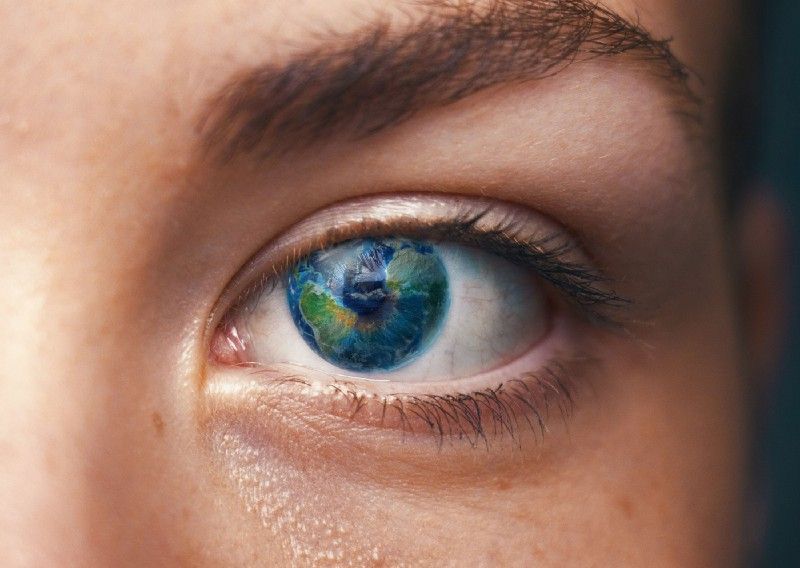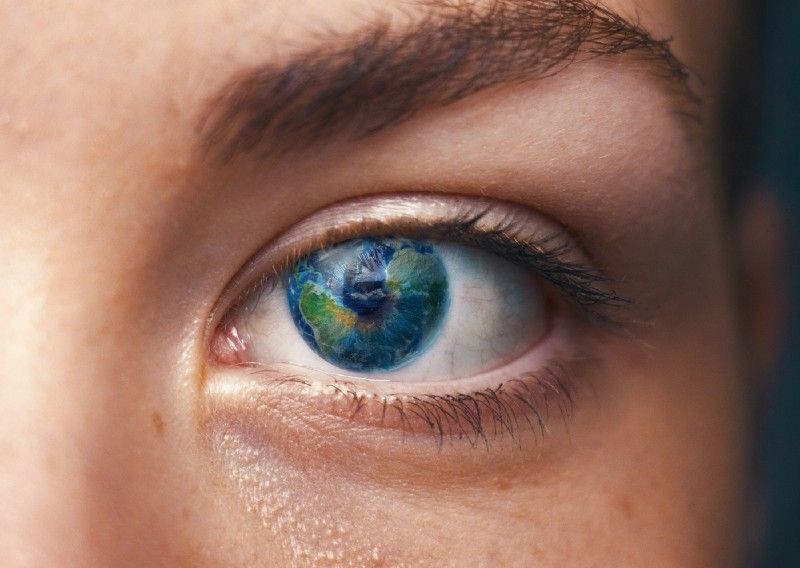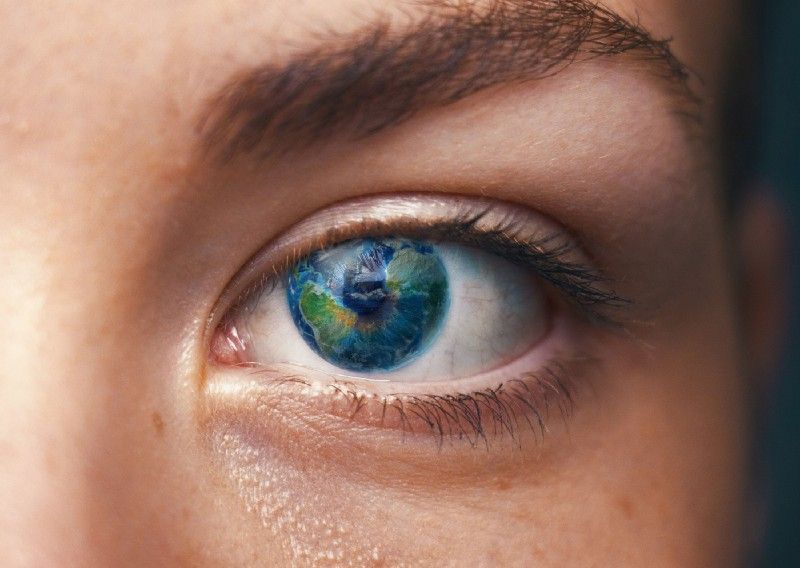When you try to imagine a future where so much of our lives will become digital, I can almost guarantee that you are underestimating exactly how much. When I talk about “moving humanity to the software layer”, I mean moving almost everything. Sitting today in the early 2020s, we know that certain types of things have already transitioned– when is the last time you used a paper map? But so much more will make that same transition in the coming decades.
I like to walk down the street and imagine what will eventually be part of the AR layer and what will remain in physical reality. You can do it too, right now, wherever you happen to be. Look around and ask yourself, “What is bolted down?” This simple question will help you separate out what is going to stay physical and what is likely to become software.
Here’s an example to start with: think of a can of Coca-Cola. The soda itself– that’s going to need to stay physical. The can– well, something has to hold the physical liquid. Seemingly this can of soda is going to stay put. But upon further inspection, what about the label on the can? That classic red color and white logo? I see no reason for that to be physical; it could be in AR instead. You might be asking… but why would I want to do that? We are going to spend a lot of time in this book exploring the advantages (and drawbacks) to moving to software. This chapter is just supposed to get you thinking about the sorts of things we could move, even if you are not convinced we should yet. But here is a short list of why moving the Coke can label to software would be better.
- It would be cheaper to manufacture. Imagine that the physical can was just a plain, unmarked aluminum can with its original finish. If you are Coca-Cola, producing millions of those a year, shaving off those few pennies per can could be a huge cost savings.
- It would be better for the environment. The dyes and materials needed to create and print the labels would no longer be used.
- You could update the appearance of the can at any time. Want to add Santa at Christmas time? Update the logo? Partner with the NFL for Super Bowl weekend for a special edition can? Coke could change anything about the look of all their cans around the world, and it would be as easy as updating their website.
- Personalization– in software, there is no reason why everyone needs to see the same can! Imagine being able to custom-tailor the appearance of the can for different types of customers, or even down to the individual. Walking down the grocery aisle, you could be seeing a can that is optimized for you personally, whereas I would see a different version of it optimized for me.
It’s not just the can that could change its look. The soda itself could look different in AR. Yes, the actual water and sugar and bubbles are physical, but their appearance could be altered with software. The liquid could be made to look pink on Valentine’s Day or green for St. Patrick’s day. Instead of using artificial coloring, they could actually ship the soda with its natural coloring, and it could be made to look brown in AR. This would save money on ingredients and be (marginally) healthier for the customer to drink.
Again, we will explore each of these types of impact in more detail throughout the book, but this is a little preview of how augmented reality opens up a world of possibilities and introduces many second and third order effects. Think about labor markets– Coca-Cola doesn’t need paint for its cans or artificial coloring for its soda any more, and so what happens to those suppliers or the workers that they currently employ? What sorts of software engineers will Coke need to hire instead?
I hope you are starting to think something along the lines of, “Huh, I never thought about all that, just from the label on a soda can…” That’s exactly how I want you to start looking at the world around you. There is a huge potential ripple effect from each and every seemingly trivial piece of our reality that could transition from physical to digital.
What else is bolted down? We’ve established that food and drink will stay physical, and some sort of containers to house them. Shelter– the walls to block the wind, the roof to block the rain– those need to stay physical. Clothing, as in not being naked and barefooted, that’s going to stay physical, although we will discuss fashion extensively later on. Things that provide hot/cold (like a heater or air conditioner or oven or refrigerator), that’s physical. The essentials are sticking around!
On Maslow’s famous Hierarchy of Needs, the bottom of the pyramid is labeled as “Physiological needs: air, water, food, shelter, sleep, clothing, reproduction.” That’s a pretty solid (pun intended) list of what is unlikely to make its way to software. That doesn’t mean that there won’t also be virtual clothing or virtual sex, but ultimately pixels on the screen are not going to keep your body warm or make a (real) baby.
I mentioned the thought exercise I like to do while walking down the street. Let me talk you through a typical street scene here in New York City, parsing out what is bolted down vs. what will end up in AR.
I stand at the corner of a crosswalk, waiting to cross the street. In the time of ubiquitous augmented reality, what is still physical, and what is AR?
The street itself, that’s physical. The lines painted on it that are now dirty and faded? Those would look great and sparkling new in AR. The sidewalk probably stays as is. What about the traffic light and crossing lights? That could totally be in AR. The stop, yield, and one way signs? Definitely AR. The street signs telling me what avenue or street I’m on, those are AR.
I look down the block and see a variety of storefronts and restaurants. All the signs out front and in the windows, that’s all AR. But the tables and chairs out on the sidewalk, you guessed it, those are still physical.
People walk by me, they are wearing physical clothes, but the logos and designs on their shirts and hats– those are in AR. Actually, that guy’s entire hat might be AR, it’s hard to tell… Some things will be obvious one way or the other, some not so much.
The cars that pass have AR license plates and other virtual accoutrements. Real physical people are inside them. Their headlights and brake lights– are those still physical? We’ll talk more about light in a later chapter, but it’s not always intuitive. Brake lights are not really for lighting the road, they are more to alert the drivers behind, kind of like the traffic lights, so those would likely become AR. But surely headlights need to be real lights to light the real road right? Well, not necessarily. As we will learn later on, even lighting, even if applied to the physical world, can exist purely via software.
Of course, another thing on the street is… me! How do others see me? Can I choose how to present myself to the rest of the world? Or do you get to decide how you want to see me? Now apply that question to everything that we just described above– if someone drives by with a car that is painted blue in AR, is it somehow mandatory that everyone else sees it as blue, or could I choose to see it as a green car instead? What are the rules about who has the right to change the appearance of what and for who?
“Hey officer, the guy that robbed me was wearing a white t-shirt!” But was he really?
Things get much more complicated when they can be changed on the fly and when different people can see things in very different ways. The echo chambers we have today on the Internet are nothing compared to what could come. Today, you might see a different social feed than mine, or we might see different suggestions when we log into Netflix or Amazon.
In the future, if your favorite color is blue, and you decide to make everything in your world blue, and I do the same with green, we quite literally will be living in different worlds. Common ground will be even harder to find.
So in the end, what is bolted down? What must stay physical? Not as much as we think.











